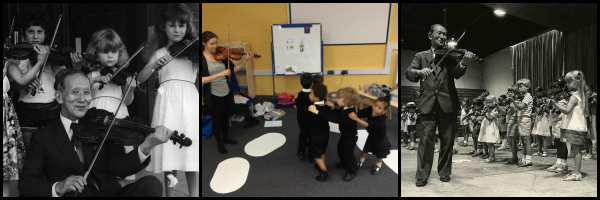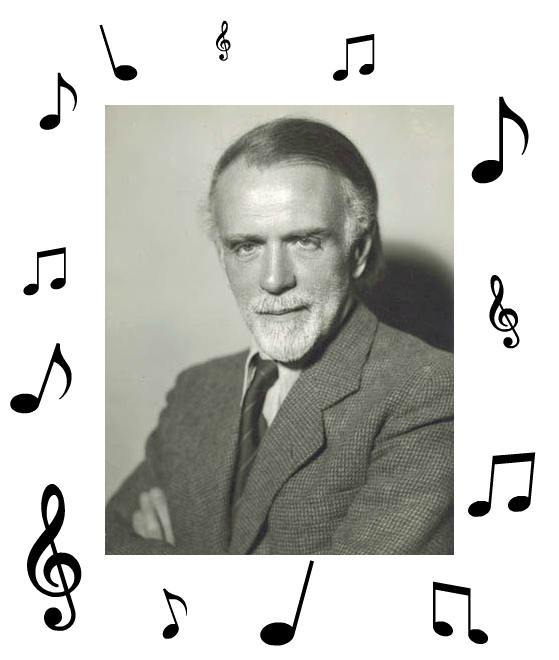The Suzuki method of teaching
The Suzuki method is a method of teaching music development and executed by Japanese violinist and pedagogue Shinichi Suzuki (1898-1998) dating from the mid-20th century. The Suzuki method has helped many children to play music at a high standard and many Suzuki trained students have become highly acclaimed professional musicians, however, the emphasis of the method is the development of the child through music. The method has extended from teaching the violin, to include many instruments such as cello, viola, flute and piano.
What is the Suzuki method?
The Suzuki method is based on the principle that all children process ability and that this ability can be developed and enhanced in a nurturing environment. Most children learn how to speak their own language with relative ease and if the same natural learning process is applied in teaching other skills, these can be acquired successfully. Suzuki referred to the process as the mother tongue method.
The mother tongue approach for music builds on the principles of language acquisition. These principles include an early beginning, listening, loving encouragement, parental support, constant repetition, learning with other children and then then learning how to read. Since all children learn and master their language before they can read, Suzuki believed that all children could learn and master music the same way. Even though theses are important elements in the Suzuki method to instrumental teaching, it is the totality of the method that distinguishes the Suzuki method.
Image Source: www.spectator.co.uk, www.amypirtle.com
The important elements of the Suzuki approach to instrumental teaching include the following:
Early Beginnings (3-4 years)
So much development takes place in a child’s early years and Suzuki though that these years should not be ignored but cultivated with love and care.
Learning from demonstration
Children learn a lot from observing other children learning. With the Suzuki method a beginner student may observe others for up to a year before they start to play themselves.
Pace
Start young, slow and don’t stop. Children learn at their own individual pace. The Suzuki method is thorough and challenging but not “pushy” at all.
Listening
With the Suzuki method, students will listen to the recordings of music pieces that they will learn to play long before they learn how to play.. Just the same as in conventional schools, books are introduced to children only after they have learnt how to talk. Therefore, written music should only introduced to the student after they have played for a few years. Moreover, by listening to music and learning to play a piece by ear will develop a sophisticated ear for pitch and tone.
Complete mastery
Students of the Suzuki method stay practicing on a piece long after they have mastered the notes. They are taught to play from memory which is seen as the starting point for work on proper technique and musicality.
Common Repertoire
All Suzuki students learn and follow the same sequence of material. Each instrument has its own repertoire which has been designed to take the student from ‘Twinkle Twinkle Little Star’ to grade eight level and beyond.
Group practice
In group practices children benefit from the social aspect of playing together by learning from each other and maybe discovering something new. Ideally a Suzuki student would attend group practice once a week, in addition to their individual lessons.
Playing in public
Not only do the children become used to playing in public by having their individual lessons observed, they should also get the opportunity to play in concerts organised by their Suzuki teacher. The British Suzuki institution organise concerts in prestige concert halls every two years.
Parental Involvement
Parents have an active role in the Suzuki method and are expected to attend lessons, take notes and practice with their children.
Practice
Children learn to speak their language fluently because they speak everyday, therefore, according to the Suzuki method, music should be practiced every day.
Love
Suzuki believed that music ability lies in all children, he did not believe that he was imposing a skill upon the children he was teaching, he was rather guiding them to manifest what they already possessed. The Suzuki method is not about breeding musicians or inculcating skills in children, it is about the amazing results that can be achieved with understanding, sensitivity and discipline combined in a single field of study. Suzuki believed that the glue that binds these various elements together is love.
Being a Suzuki student or parent
With the Suzuki method students begin very young and parents must attend their children’s lessons so that they can supervise home practice every day, however, the parent’s obligations dwindle as the child gets older. Students typically take weekly lessons from a private teacher and at some point you’ll have to buy or rent (borrow, beg or steal) a violin. We recommend that you ask your child’s teacher to help you find the ‘right’ violin.
Hope to see you soon!
Find out more about Holiday Academy’s Suzuki classes and all our other activities here
References:
www.violinist.com
www.suzukimethod.or.jp
www.internationalsuzuki.org
Image Source: www.suzukiassociation.org



